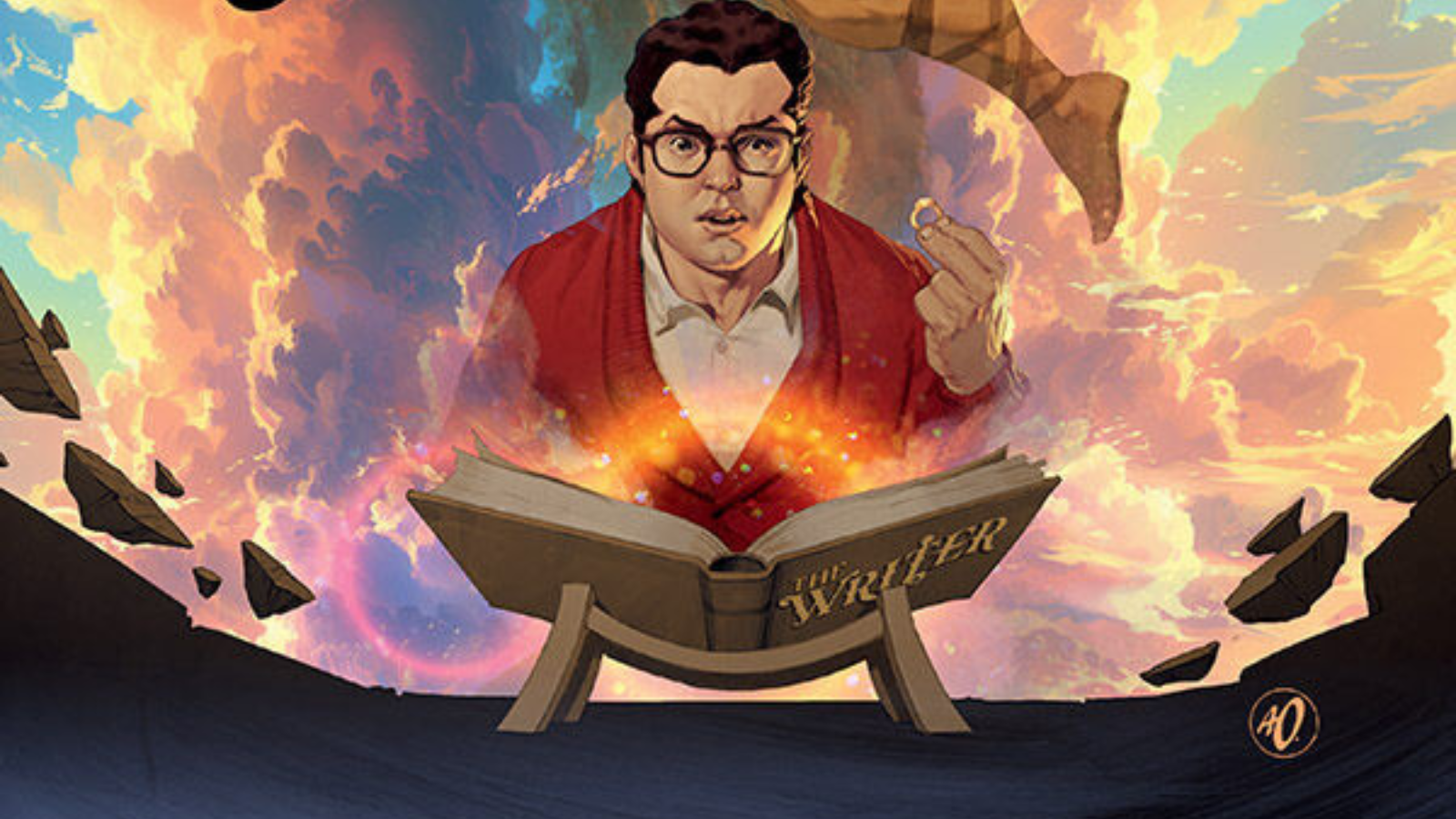
You may have heard of Josh Gad. He’s performed on Broadway in The Book of Mormon. He’s been in movies such as Beauty and the Beast and Murder on the Orient Express, and lent his voice to a happy-go-lucky snowman in a little movie called Frozen. But what happens when he lends his talents to writing a comic book? You get a fast-paced, high-stakes story that delves deep into Jewish lore to put a new spin on the unlikely hero trope.
*Mild spoilers ahead for The Writer issues #1-4*
Written by Josh Gad and Ben and Max Berkowitz, The Writer follows professor of Jewish folklore and aspiring author Stan Siegel. Stan is the type of guy that just can’t seem to get it right. He can’t make it as a writer. He can’t be there for his daughter like he should be. He can’t even get the dean of his college to do something about people painting swastikas on the building where he teaches. Not exactly what you’d expect from a comic book hero. He does, however, have a ring that once belonged to King Solomon (yes, that King Solomon), as well as a letter from his missing father to never put it on. You can probably see where this is going. Stan puts it on, and suddenly his entire world changes. An elderly Jewish man immediately appears, yelling at him to take it off before a demon-possessed man enters the diner he’s eating at. The old man draws a sword and manages to kill the demon’s host, but the demon still manages to kill him and seize the ring. Before he dies, he takes a piece of parchment and shoves it in Stan’s mouth, causing his body to change into a rocky golem strong enough to make quick work of the demon. But his challenge is just beginning, and all too soon he finds himself wrapped up in a massive fantasy adventure that brings him face-to-face with the very beings he would have taught about in his class.
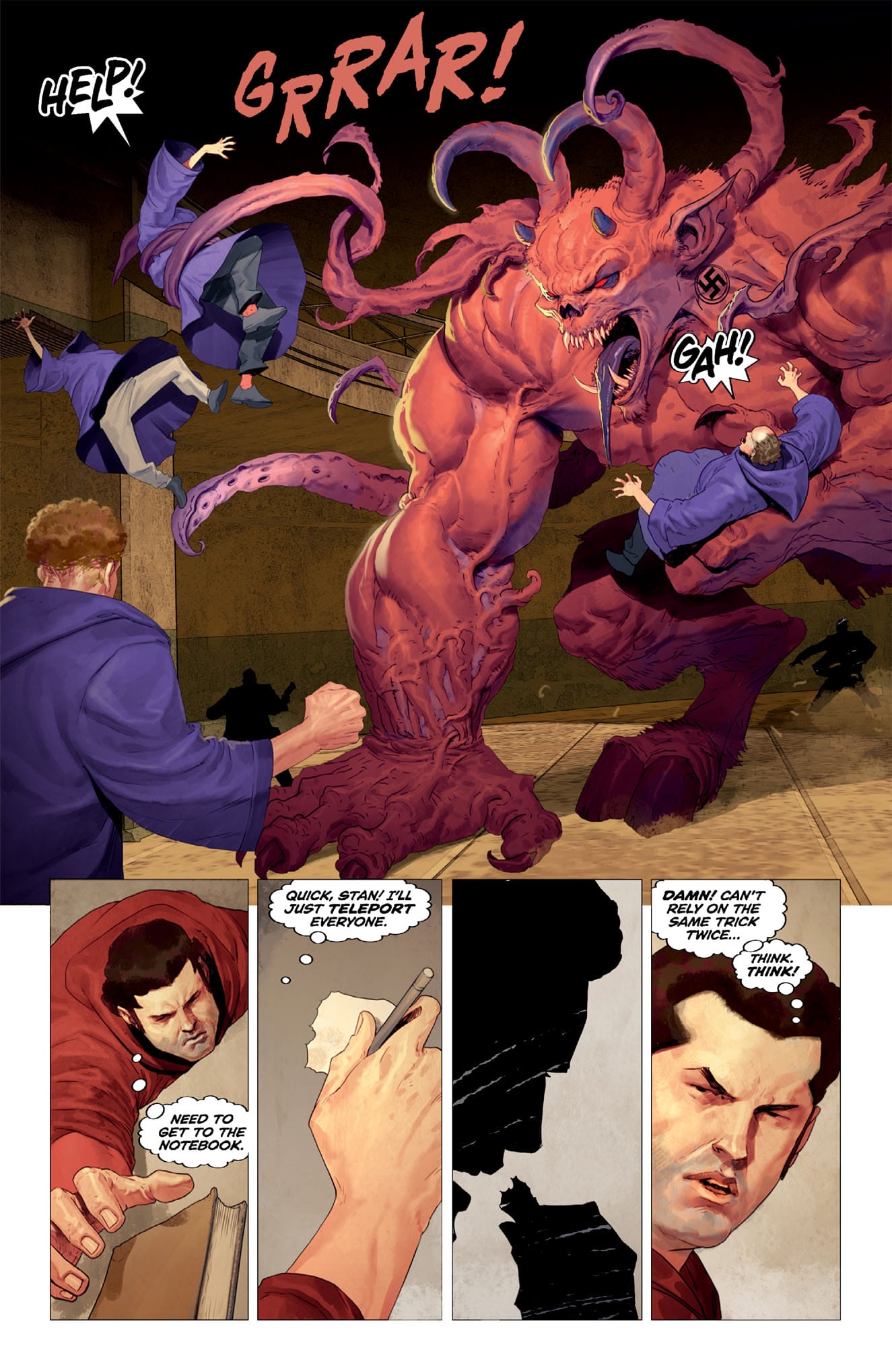
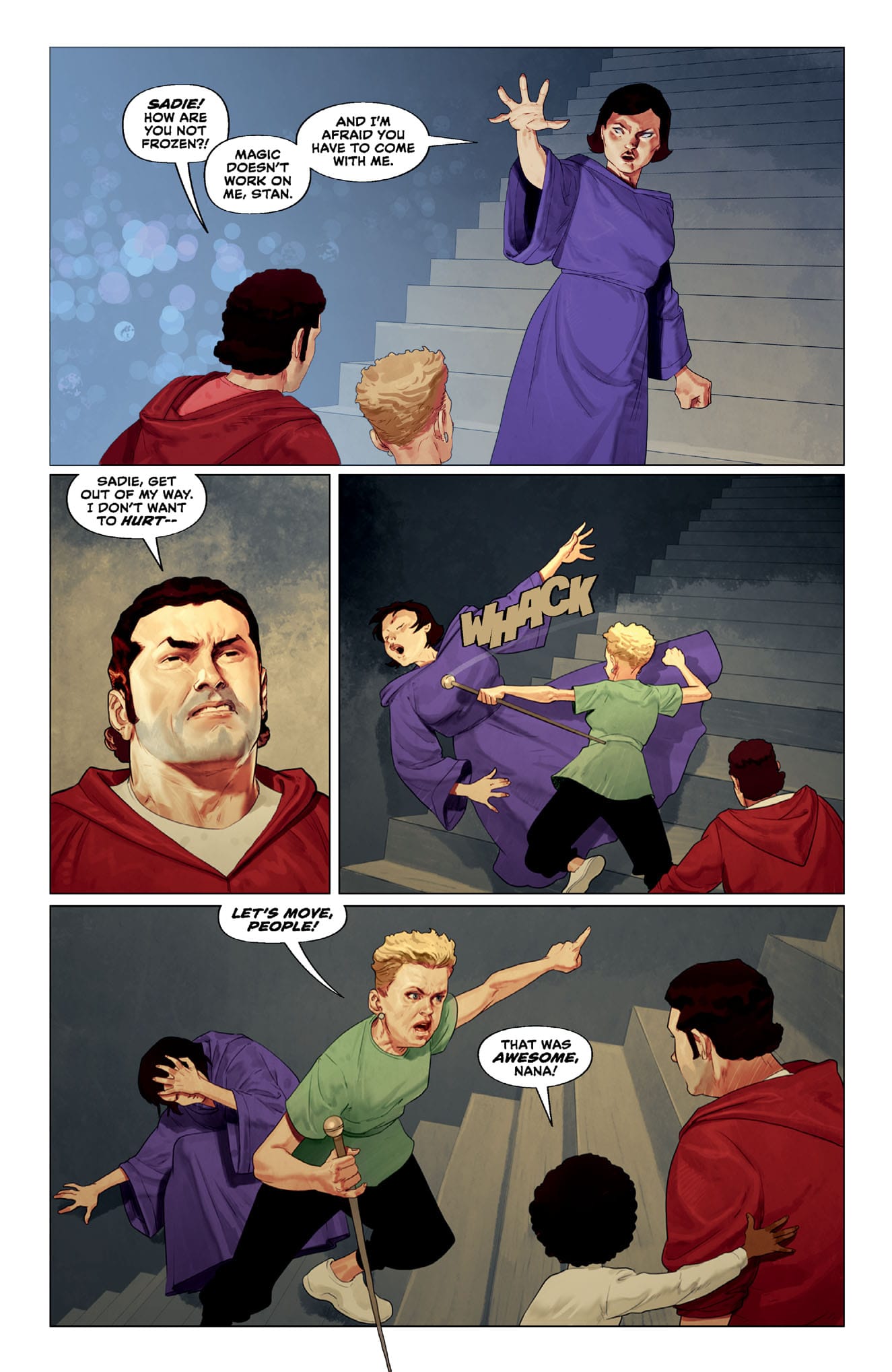
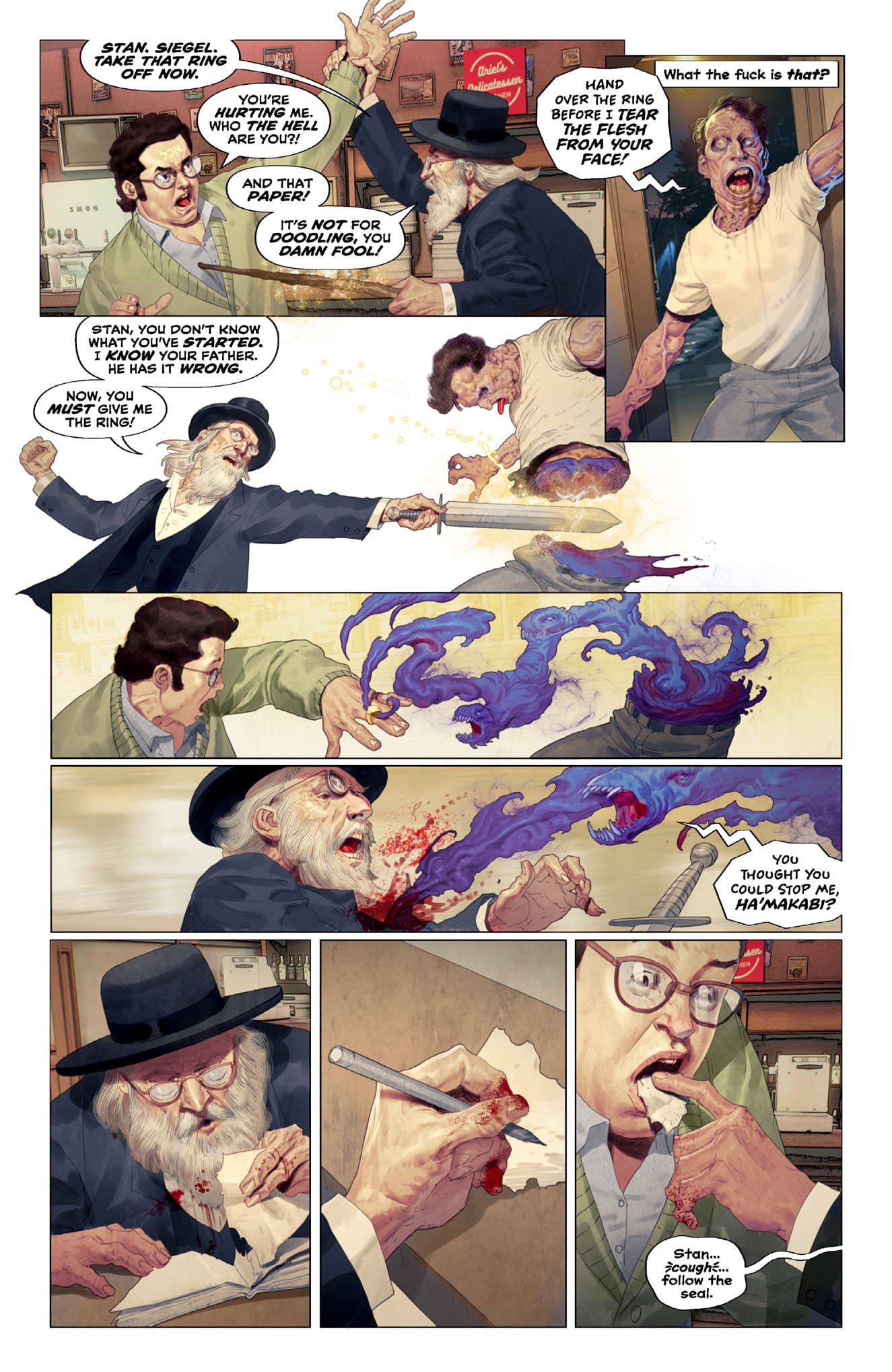
One thing you quickly realize about this story is that it’s incredibly fast-paced. The reader is given few slow moments to catch their breath before the next thing happens, and those sparse moments are often little more than a page or two. This works well in the context of the story, given what’s revealed later, but at first can be a bit jarring. Stan seems to jump from obstacle to obstacle with little, if any, lead up. This makes the story feel rushed in places, as if the writers couldn’t think of what to put in those spaces and chose to handle it by just skipping them. As stated before, though, this is an intentional decision based on the overall story premise. The characters even acknowledge it throughout the story.
That said, the story isn’t one to waste time hand-holding. The writers provide readers with a glossary of terms and names at the beginning, but beyond that (and a few lengthy exposition dumps), the reader is largely left to their own devices to understand what is happening, or at least to push through. Though not stated explicitly, this is likely a choice made intentionally. After all, though Stan is a professor of Jewish folklore, there’s a significant difference between teaching about myths and suddenly finding yourself face-to-face with the figures from these stories. Between that and the powers he discovers he can gain from consuming pieces of parchment, Stan—like the reader—is having to figure things out as they occur without anyone to explain it to him. This is a creative choice that feels very convenient at times—especially when compounded by how rushed some sections feel—, but really pays off in the reveal at the end of the story.
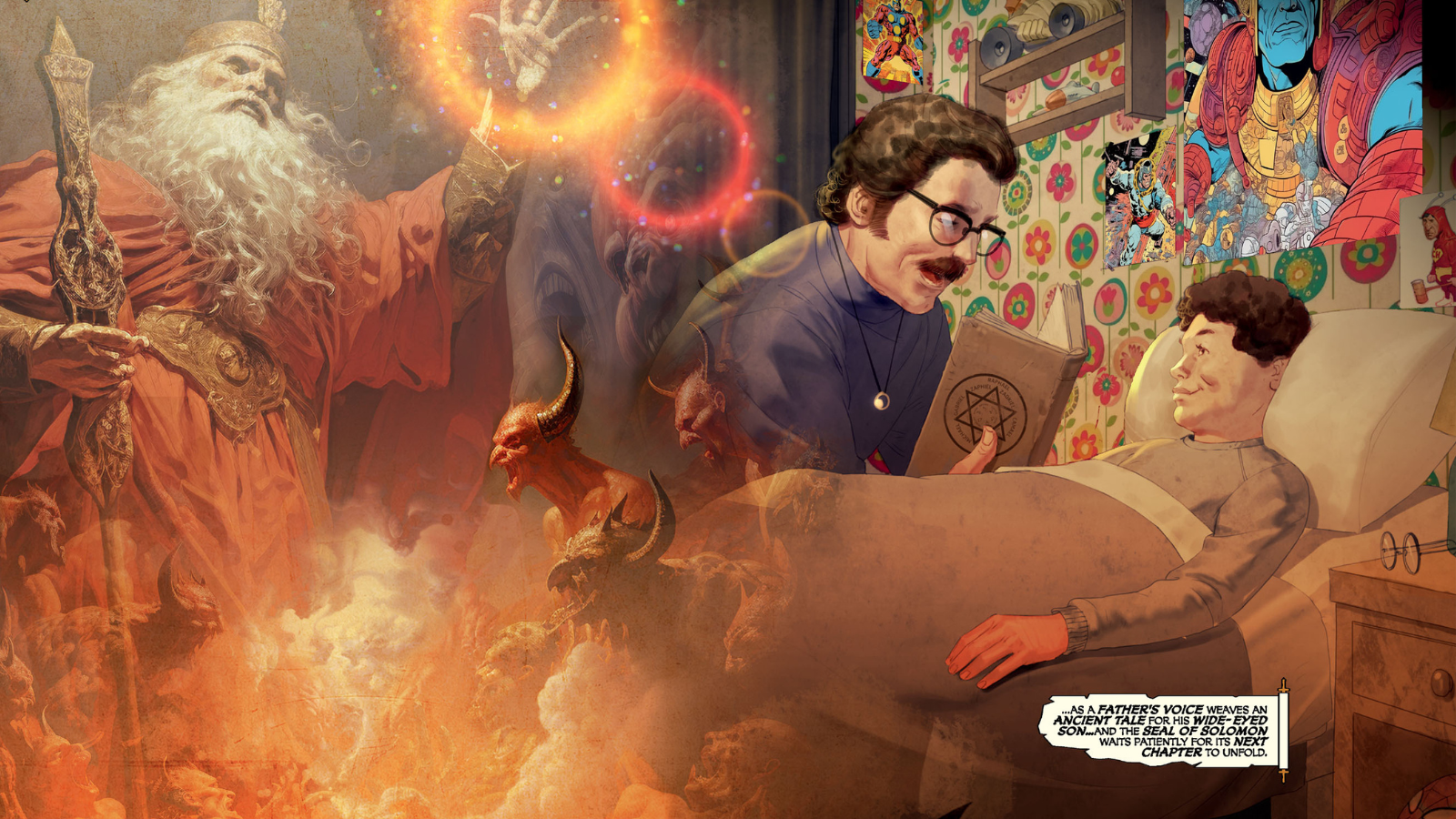
Speaking of the ending, this is where I was genuinely surprised. For the most part, the story read very much like a traditional fantasy adventure. An unlikely hero discovers they must save the world from an ancient evil, utilizing powers that they never realized they had before. They enter into a world of danger and magic, facing great challenges in order to achieve the goal they’ve been tasked with. But the way the ending was executed was unlike anything I could have expected. I won’t go into detail to avoid spoiling it, but it was incredibly satisfying, to say the least. Some people may dislike the way it was handled, and they are welcome to their opinion, but I thoroughly enjoyed how it all played out.
The artwork by Ariel Olivetti is fantastic. Not only does the level of detail remain consistent throughout the story, but his illustrations truly bring the story to life. Whether it’s the various threats Stan and his companions must face or tiny quirks the characters exhibit, the artwork sucked me into the story just as much as the writing. Plus, it was fun to see a particular demon from another publisher appear, even if only for a split second. They don’t name him, but the artwork—along with a line from another character—leave little doubt as to who it’s supposed to be.
This brief appearance is far from the only reference to another work. The story is littered with fun easter eggs, from brief cameos of familiar characters to lines quoted from other franchises. These are all minor things rather than crucial plot elements and the story would be just as good without them, but they add a fun touch that makes the experience all the more enjoyable.
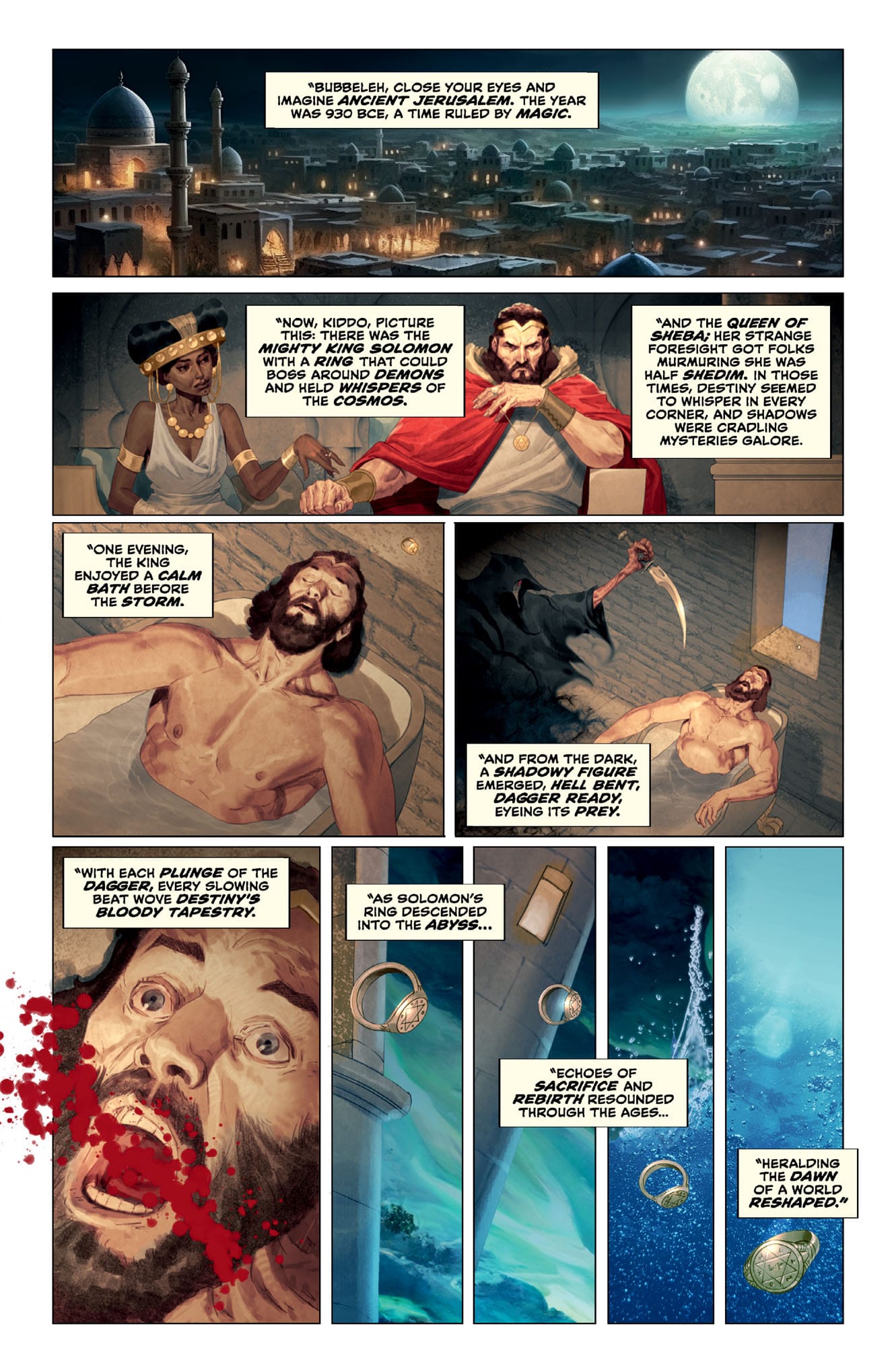
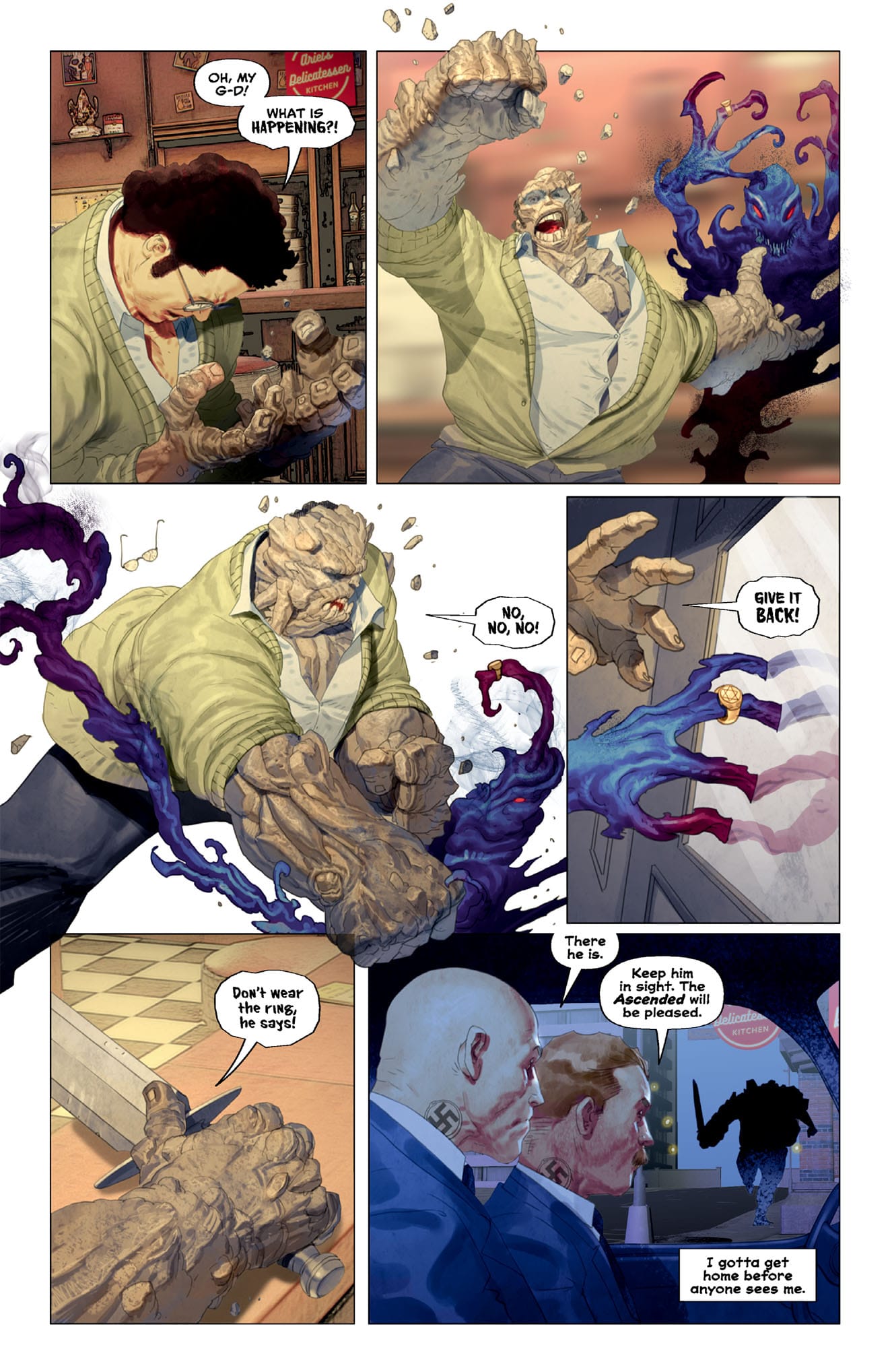
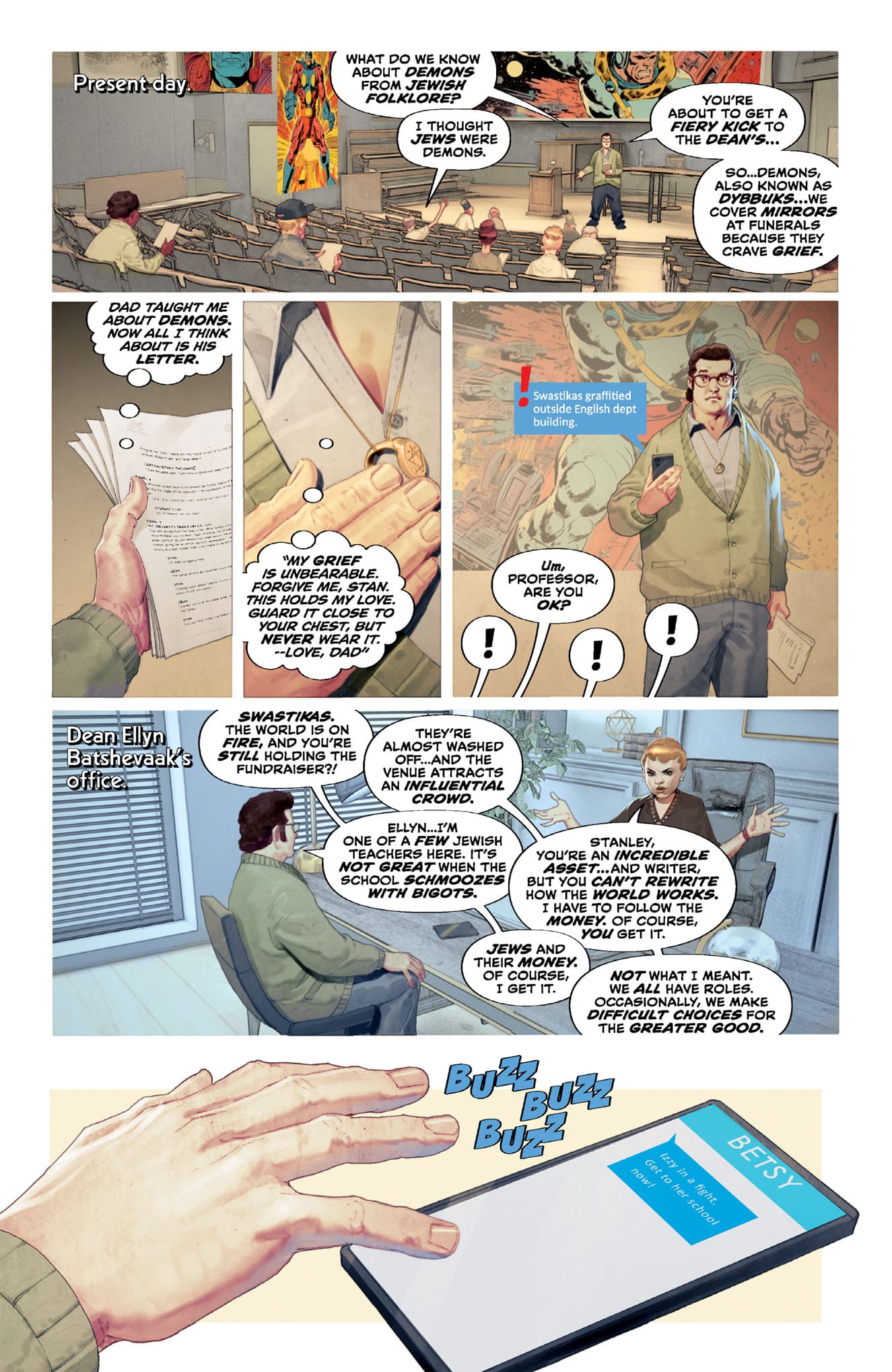
But as much as the story works to add in fun elements, it also isn’t afraid to address a far more serious matter. One that is very close to the writers’ hearts that is frustratingly still all too prevalent even today: bigotry. They could have easily just presented us with a fun fantasy story of good versus evil; the kind where we know that good will ultimately triumph over evil, and we’re just reading to see how they do it. Instead, they choose to do something more. They choose to address a real-life evil that far too many refuse to acknowledge that they’re perpetuating while believing that they’re actually the good guys. And while some may argue that a comic book isn’t the place to discuss such matters, I disagree. Comic books, just like all entertainment media, help to keep issues like the one presented here or countless other societal issues in the public consciousness, allowing the conversation to be “kept alive,” as stated by one of the characters in the story.
That’s not to say the story is preachy, or that this message is shoved down your throat. But the writers don’t shy away from it, or even try to hide it behind carefully constructed metaphors. They present it boldly, making it impossible to misunderstand them, which honestly makes a story that started off as just a fantasy adventure something far more profound. But don’t take my word for it. Pick up your own copy and see for yourself.
The Writer TPB is available now from Dark Horse Comics
The Writer TPB
Excellent
A fast-paced, exciting fantasy adventure, The Writer is a great story for fans of fantasy books and comics alike. Though it struggles with pacing issues, the story is, overall, immensely enjoyable, and the deeper message about bigotry only makes it all the more powerful. With a twist ending that is bound to surprise even the most seasoned readers, it’s sure to be a fun ride for any who picks it up.
Pros
- Fun, action-packed story full of interesting characters and rich lore
- Story doesn’t shy away from an all-too-prevalent real-world issue
- Easter eggs made for some fun surprises
Cons
- The rushed pace, while explained in-story, weakened the story
- Characters received little characterization, even the main character
This review is based on a retail copy provided by the publisher.
